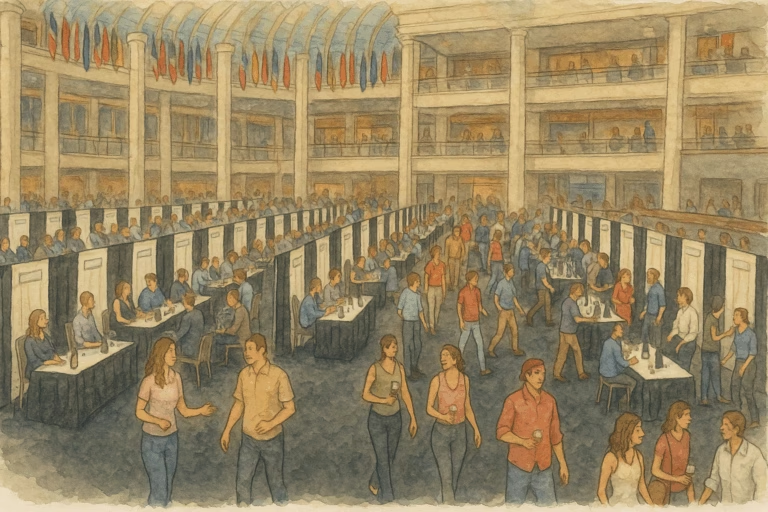Chill, Sip, Swoon, Repeat: The Best Italian Wines for Summer
Discover the best Italian wines for summer! From chillable reds to crisp whites, get expert tasting notes and affordable wine recommendations under $30. Perfect for wine-loving women who want to explore beyond Pinot Grigio and Chianti.

I’ve been trying to get a handle on Italian wine for a while now—tasting more (especially during the Italy-focused Wine Spectator Grand Tour), reading more, even squeezing in the occasional podcast episode between (or sometimes during) dog walks and deadlines.
But no matter how much I learn, Italy refuses to be tamed. Just when I think I’ve figured out Sangiovese or nailed the difference between Barolo and Barbaresco, I find myself staring at a bottle of Trebbiano Spoletino with a volcanic backstory and no idea what to expect. That, it turns out, is exactly the point. Italian wine regions are endless, and the varietals are seemingly infinite (and just as diverse). And even if you learn the web of Italian rules, they’ll only get you so far in a country where rules are made to be broken and many of the best producers are bucking tradition entirely.
Italian Wine Walkaround Tasting at the Roost
At this weekend’s Italian wine walk-around tasting, I got another dose of that beautiful confusion. Over 30 wines, dozens of grapes, barely a Pinot Grigio in sight. It was less an Italian Wine 101 course and more a choose-your-own-adventure through Italy’s rich wine map—and just when I was ready to wave the white (wine) flag, I came to appreciate that these bottles aren’t asking to be mastered so much as enjoyed (ideally with pasta or pizza to pair).
Here are five takeaways from a tasting that made me feel delightfully underqualified—and deeply inspired.
1. Italian Wine Goes Way Beyond Chianti and Pinot Grigio
If you come to Italian wine expecting familiar grapes and easy answers, prepare to get beautifully lost. Sure, there were a few well-known names in the lineup—like the earthy and elegant Bramosia Chianti Classico from Donna Laura, which kept the red cherry and dried herb energy of classic Sangiovese but polished it to a subtle sheen. But most of the wines came from varietals I’m still learning how to pronounce, let alone explain.
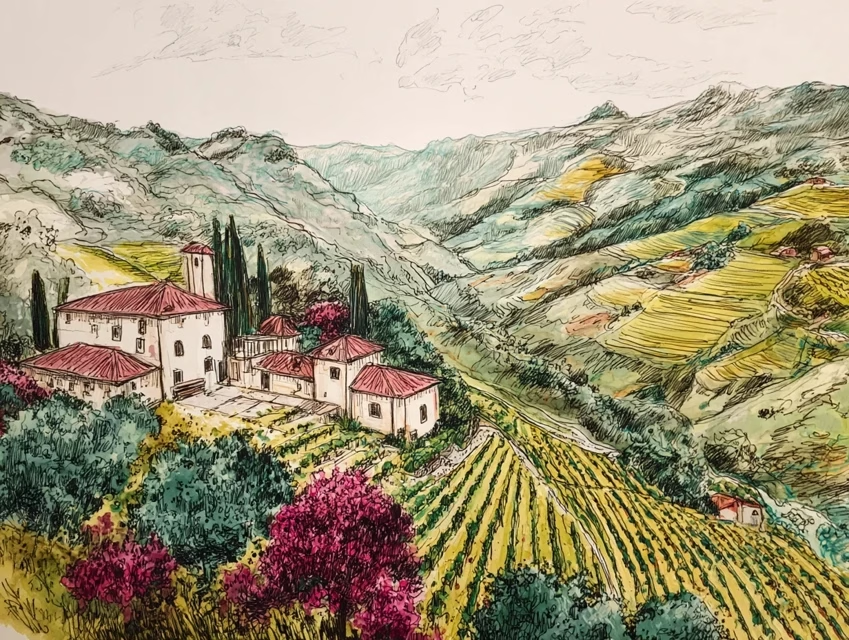
Take the Marachelle Frizzante from Diletta Tonello, made from Durella—it tasted like lemon soda filtered through limestone and felt tailor-made for aperitivo hour. The Campo di Colonnello from Raina, made from Trebbiano Spoletino, had oxidative flair and a savory grip. Think golden apple, salted almonds, and chamomile tea—it felt like it had wandered in from a French natural wine dinner party. Even the Frappato from Tenuta Valle delle Ferle, all strawberry leaf and rose petal, was a lesson in levity with structure.
2. Why You Should Be Chilling Your Italian Red Wines This Summer
Here’s a game-changer: Italy produces some of the most beautifully chillable reds around—wines that gain energy and clarity with a slight drop in temperature. One of my favorites was Un Litro from Ampeleia, a coastal Tuscan blend that comes in a friendly liter bottle (more wine, more fun) and drinks like a picnic: juicy red berries, sagebrush, and the kind of gulpable acidity that makes you wonder why you ever feared red wine in summer.
The Rosso Matilde from Bugno Martino, a dry Lambrusco Mantovano, was a different kind of cool—fizzy, ruby-toned, and refreshingly savory, like rhubarb seltzer spiked with amaro and black pepper.
Kaltern’s Schiava from Alto Adige brought featherweight body and cherry blossom aromatics, practically floating out of the glass. It tasted like a red wine designed by watercolors—subtle, translucent, and unexpectedly structured. Even the Terre Siciliane Pinot Nero from Massimiliano Calabretta, grown on the lava-strewn slopes of Etna, felt like it belonged in the chillable camp: restrained, mineral, and perfumed with cranberries and wild herbs. If you’re looking to stock a summer fridge, Italy has you more than covered.
3. Italy’s Best White Wines for Seafood and Salty Snacks
The white wines at this tasting were everything I want in warm-weather wines: crisp, mineral, herbaceous, and sometimes downright salty. Le Bine de Costiola from L’Amellini, a classic Soave Classico, was pure Garganega with notes of lemon peel, blanched almonds, and chalky grip that practically begged for oysters or linguine with clams. Just as impressive was the Verdicchio from La Staffa, which balanced yellow plum and bitter herbs with a stony, almost smoky backbone.
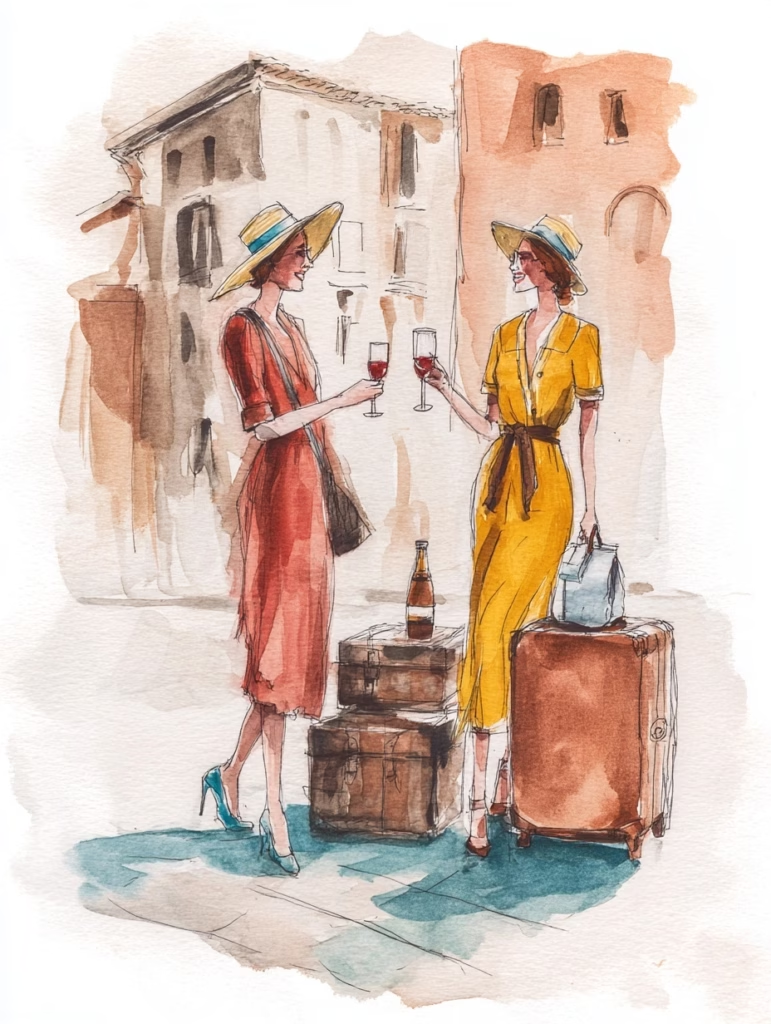
And then there was Akènta Sub from Santa Maria La Palma, a Vermentino aged underwater off the coast of Sardinia, in a bottle crusted with sea salt like a message in a bottle from Poseidon. It smelled like sea spray and lime zest, looked absolutely wild, and drank like the perfect pairing for anything fried, briny, or both. Umani Ronchi’s Vellodoro Pecorino, meanwhile, brought richer stone fruit tones and a fennel pollen twist that would sing next to grilled squid or a cold seafood salad. These wines weren’t just summer whites—they were specific summer whites, meant for sunlight, shoreline, and salty bites.
4. Italian Wine Bottles Are Works of Art
Some of the most memorable wines of the day had as much style on the outside as they did inside the glass. Vetere Rosato from San Salvatore—a gleaming rosé made from Aglianico—came dressed in one of the prettiest labels I’ve seen all year, with bold block printing and clean design that hinted at its contents: sleek, saline, and quietly chic. The wine itself was structured and mineral, with watermelon and alpine herb notes that built over time like a crescendo.
But the real showstopper was Akènta Sub, which earns a second mention for its appearance alone: after months aging in the sea, its bottles emerge barnacled and salted, no two alike. I felt like a pirate drinking buried treasure. On the natural wine end of the spectrum, Ca’ dei Zago’s Colli Trevigiani Frizzante Col Fondo, made from Glera, came cloudy and lightly spritzy, with unfiltered funk and enough lemon zest and cider apple to refresh even the most palate-fatigued taster. It looked rustic, tasted alive, and reminded me why Italy is still such a creative force in winemaking—not just in flavor, but in form.
5. Affordable Italian Wines That Overdeliver Every Time
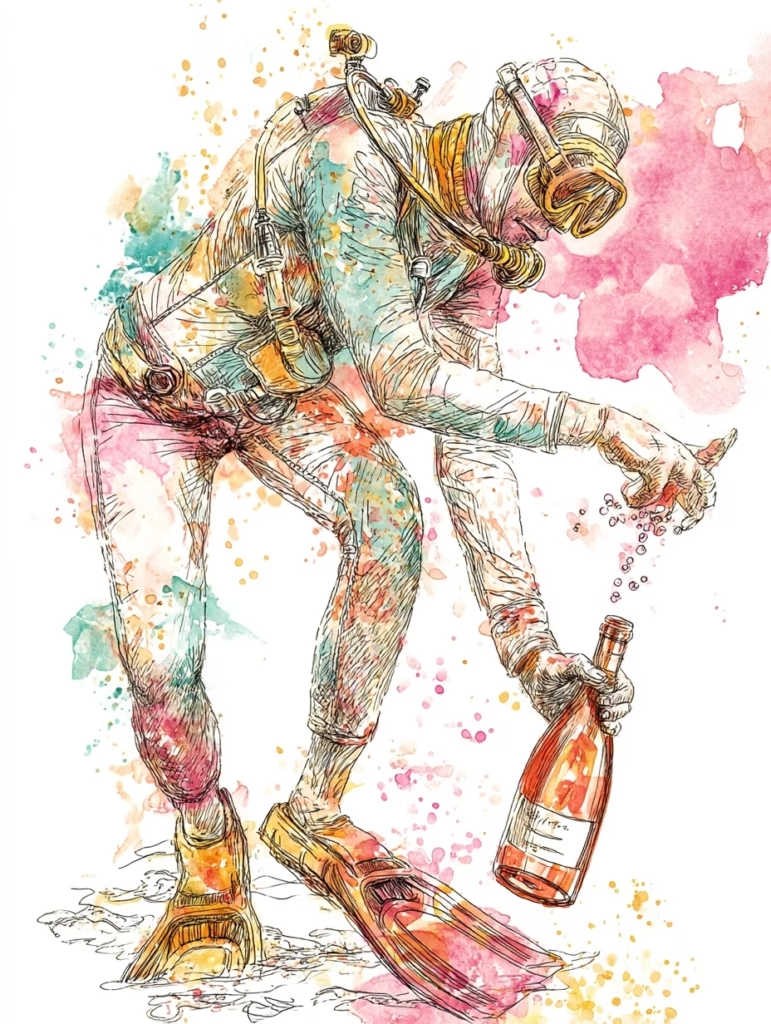
One of the most refreshing things about this tasting? The vast majority of bottles came in under $30. These weren’t mass-produced wines, either—they had texture, personality, and point of view, often from small producers working organically or sustainably. The Volere Volare Primitivo from Pietraventosa delivered plush black fruit and spice without veering into overripe territory, while Le Papesse Sangiovese from Villa Papiano was savory and red-fruited, the kind of wine that feels built for Tuesday night pasta and rewatching your favorite moody Italian film.
Even the Franciacorta Brut from Il Mosnel, one of the few truly premium sparklers in the room, managed to taste like Champagne at a more generous price point—creamy mousse, baked pear, and just the right amount of toasty sophistication. These wines weren’t just affordable; they were exciting. While I love to splurge on the occasional $100+ Barolo as much as the next wine lover, as a day-to-day wine drinker, casual bottles play a bigger role in my life and collection. This event was a welcome reminder that great Italian wine doesn’t need to come with sticker shock—just a little curiosity.
Final Sip: Italian Wine Isn’t About Perfection—It’s About Pleasure
Italian wine isn’t here to give you a tidy summary. It’s here to confuse you, challenge you, and charm you—sometimes all in the same glass. This tasting didn’t make me feel like I had it all figured out, but it did make me want to keep tasting. Keep chilling reds. Keep ordering the weird white on the wine list. And maybe, just maybe, start planning a Sardinian beach trip—Vermentino in hand.
The Italian Wines That Came Home with Me
Of course, the fun didn’t stop at the tasting. Here are my notes on the nine bottles that came home with me to keep the summer sipping going.

Diletta Tonello | Marachelle Frizzante | Durella | Veneto, Italy | ABV 12.0%
Bright, briny, and impossibly refreshing, this frizzante Durella feels like a sea breeze in a glass. Lemon zest and green apple race across your palate, carried by featherweight bubbles and a flicker of volcanic minerality. It’s savory, sparkly, and ever so slightly wild—the pét-nat of your Italian summer dreams. Whether poured over oysters, paired with potato chips, or sipped while sunbathing in denim cutoffs, it’s joy in bottle form.
Col dei Venti | Cométe | Moscato d’Asti | Piedmont, Italy | ABV 5.5%
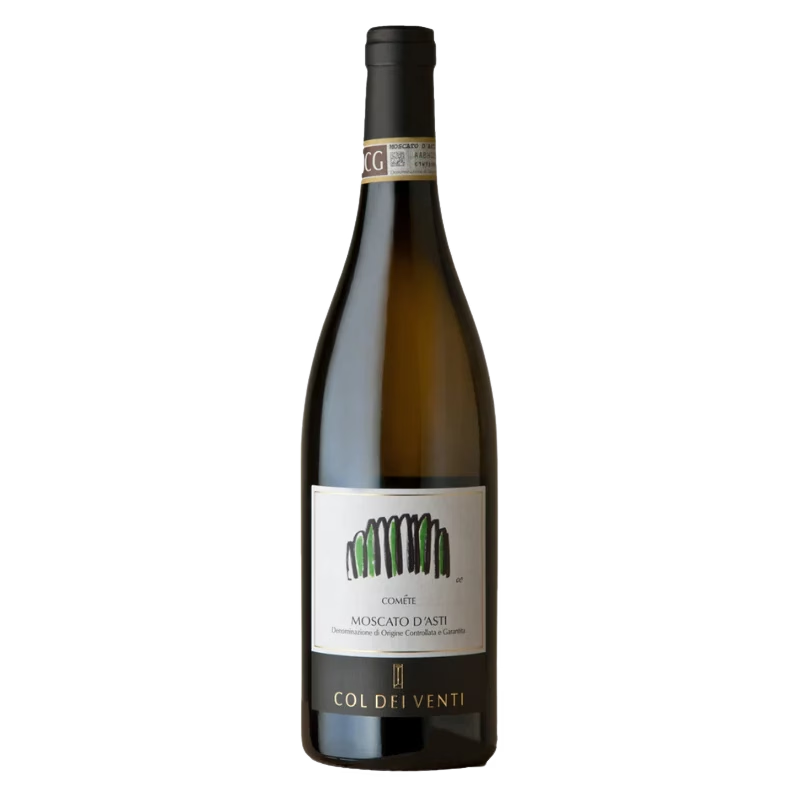
A cloud-soft kiss of a wine. Honeysuckle, orange peel, and juicy peach, lifted by a featherweight spritz and balanced by gentle acidity. It’s sweet, yes—but in a way that feels joyful, not saccharine. A perfect bottle for brunch, fruit desserts, or post-dinner unwinding with someone special. Low in alcohol, high in charm, it’s like a giggle in glass form. And the name Cométe? Appropriate—because this one sparkles with fleeting beauty. It may disappear quickly, but it’ll leave a trail of sweetness in its wake.

Donna Laura | Bramosia Chianti Classico | Sangiovese | Tuscany, Italy | ABV 13.5%
Classic but not cliché, this Chianti Classico has edge, elegance, and energy. It opens with vibrant cherry, blood orange, and a savory backbone of dried herbs, leather, and sun-baked earth. Tannins are smooth but confident, acidity sings. It’s the red you bring to your favorite Italian restaurant—or the one that recreates that vibe at home with pizza, ragù, or roasted eggplant. “Bramosia” means desire, and this bottle earns the name. It tastes like Sunday dinner with someone you trust, or a slow night in with your thoughts and a candle. A modern Sangiovese that still respects its roots.
Hofstätter | Pinot Grigio | Alto Adige, Italy | ABV 13.0%

A far cry from the neutral Pinot Grigios you’ve forgotten—this one leaves an impression. Grown at altitude in Alto Adige, it’s crisp, citrus-forward, and mineral to its core. Think lemon blossom, pear skin, and wet stone, with a surprisingly creamy finish and Alpine lift. Clean lines meet texture. It’s elegant enough for oysters, structured enough for roast chicken, and refreshing enough to drink on its own while reading something smarter than your current mood. This is Pinot Grigio for the wine lover who thought they’d moved on.
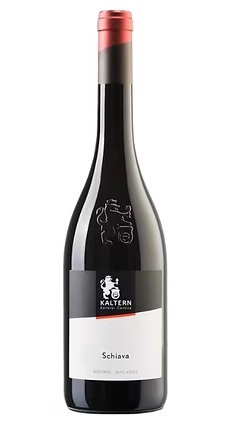
Kaltern | Schiava | Alto Adige, Italy | ABV 12.5%
Light, bright, and low-key irresistible. This Schiava is a chillable red bursting with tart cherry, raspberry, rose petal, and a faint almond edge. Silky, sippable, and structured just enough to pair with food but playful enough to pour without thinking. If Gamay and Pinot Noir had an Alpine baby, it would taste like this. Serve it slightly cool with charcuterie, grilled trout, or just about anything with herbs.
Ampeleia | Un Litro | Costa Toscana Rosso | Sangiovese + Friends | Tuscany, Italy | ABV 12.5%

A whole liter of juicy joy. This biodynamic blend (Sangiovese, Alicante, Carignan and more) is meant for sharing and sipping—no ceremony required. Bright red berries, tomato leaf, dried herbs, and a whisper of spice make for a chillable red that’s basically your new house wine. Pop the cap, pour freely, and don’t overthink it. This is the bottle for potlucks, porch hangs, spontaneous park picnics, or Wednesday night pasta. Because more wine = more fun.



